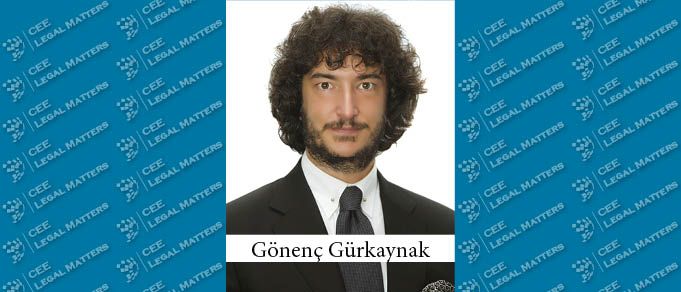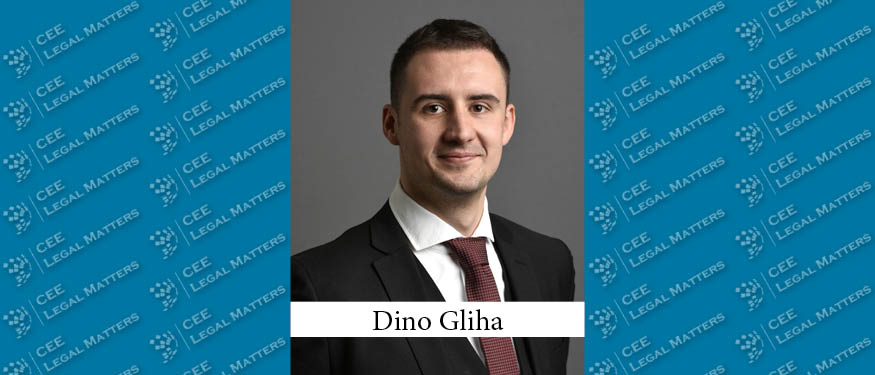As announced last week, the Turkish Competition Authority has recently amended the legislation relating to the Turkish merger control regime through an amendment communiqué. This piece of additional analysis is to explore the scope of sectors that will be exempt from certain local turnover thresholds, and therefore the concentrations in which will be notifiable in Turkey regardless of magnitude of Turkish operations.
Before May 4th, the current regime will apply. If a transaction will be closed (i.e. the concentration will be realized) as of or after May 4, 2022, that transaction will be required to be notified in Turkey if one of the following alternative turnover thresholds is met:
(i) The combined aggregate Turkish turnover of all the transaction parties exceeds TL 750 million (approximately EUR 71.9 million or USD 84.9 million) and the Turkish turnover of each of at least two of the transaction parties exceeds TL 250 million (approximately EUR 23.9 million or USD 28.3 million), OR
(ii) The Turkish turnover of the transferred assets or businesses in acquisitions exceeds TL 250 million (approximately EUR 23.9 million or USD 28.3 million) and the worldwide turnover of at least one of the other parties to the transaction exceeds TL 3 billion (approximately EUR 287.9 million or USD 339.7 million) OR the Turkish turnover of any of the parties in mergers exceeds TL 250 million (approximately EUR 23.9 million or USD 28.3 million) and the worldwide turnover of at least one of the other parties to the transaction exceeds TL 3 billion (approximately EUR 287.9 million or USD 339.7 million)
That said, the Amendment Communiqué also introduced a new merger control regime for undertakings active in certain markets/sectors. Further to the Amendment Communiqué, “the TL 250 million Turkish turnover thresholds” mentioned above will not be sought for the acquired undertakings active in the fields of digital platforms, software or gaming software, financial technologies, biotechnology, pharmacology, agricultural chemicals and health technologies or assets related to these fields, if they (i) operate in the Turkish geographical market or (ii) conduct research and development activities in the Turkish geographical market or (iii) provide services to Turkish users.
To clarify the meaning and the scope of these sectors exempted from the use of local turnover thresholds (and therefore have been rendered almost categorically notifiable in Turkey), please find below a non-exhaustive list of activities which correspond to the sectors referred to in the definition of the Amendment Communiqué. Please note that ELIG Gürkaynak drew up the list below merely in an effort to provide insight and guidance in identifying this scope, thus the list is not exhaustive. Identification of the scope of activity of the client should in any case be carried out on a case-by-case basis in accordance with the definitions of the Amendment Communiqué provided above, and the information to be obtained from the client as to the areas of activity of the transaction parties:
(a) Digital platforms: Digital platforms are systems and interfaces that form a commercial network or market facilitating business-to-business (B2B), business-to-customer (B2C) or even customer-to-customer (C2C) transactions. Digital platforms include but are not limited to social media platforms, knowledge sharing platforms, media sharing platforms, service-oriented platforms, online marketplaces and digital content aggregators.
(b) Software and gaming software: Software relates to a set of instructions, data or programs used to operate computers and execute specific tasks, while gaming software concerns software customised for gaming. Software and gaming software include but are not limited to the activities below.
(i) writing and publishing of software and gaming software (including publishing of computer games) (NACE Rev. 2: 58.2)
(ii) wholesale, retail sale, distribution and marketing of software (both customised and non-customised) and gaming software (NACE Rev. 2: 46.51, 47.41),
(iii) reproduction from master copies of software (NACE Rev. 2: 18.2)
(iv) manufacture of electronic games with fixed (non-replaceable) software (NACE Rev. 2: 32.40)
(v) translation or adaptation of software and gaming software (NACE Rev. 2: 58.29)
(vi) computer programming activities (designing the structure and content of, and/or writing the computer code necessary to create and implement systems software (including updates and patches), software applications (including updates and patches), databases, web pages, customising of software (NACE Rev. 2: 62.01)
(vii) software installation services (NACE Rev. 2: 62.09)
(c) Financial technologies: Financial technologies refer to technology-enabled innovation in financial services. Undertakings which sit at the crossroads of financial services and technology fall into the scope of this definition. In brief, the term “financial technologies” is used to define software and other technology aiming to modify, enhance or automate financial services for businesses or consumers. Financial technologies include but are not limited to technologies and software developed for the following fields:
(i) financial services activities (monetary intermediation, financial leasing, other credit granting) (NACE Rev. 2: 64.1, 64.9)
(ii) insurance, reinsurance, pension funding (NACE Rev. 2: 65)
(iii) activities auxiliary to financial services, insurance and pension funding (administration of financial markets (futures commodity contracts exchanges, securities exchanges, stock exchanges, stock or commodity options exchanges), security and commodity contracts brokerage (dealing in financial markets on behalf of others (e.g. stock broking) and related activities, securities brokerage, commodity contracts brokerage, activities of bureaux de change etc.), risk and damage evaluation, activities of insurance agents and brokers, fund management activities, financial transaction processing and settlement, investment advisory activities, activities of mortgage advisers and brokers (NACE Rev. 2: 66)
(iv) accounting, bookkeeping and auditing activities, tax consultancy (recording of commercial transactions from businesses or others, preparation or auditing of financial accounts, examination of accounts and certification of their accuracy, preparation of personal and business income tax returns, advisory activities and representation on behalf of clients before tax authorities) (NACE Rev. 2: 69.2)
(v) digital lending, payments, blockchain and digital wealth management
(d) Biotechnology: Biotechnology refers to the technology that utilizes biological systems, living organisms or parts of this to develop or create different products. The sector includes but is not limited to the activities below:
(i) research and experimental development on biotechnology (NACE Rev. 2: 72.11)
- DNA/RNA (genomics, pharmacogenomics, gene probes, genetic engineering, DNA/RNA sequencing/synthesis/amplification, gene expression profiling, and use of antisense technology)
- proteins and other molecules (sequencing/synthesis/engineering of proteins and peptides (including large molecule hormones); improved delivery methods for large molecule drugs; proteomics, protein isolation and purification, signalling, identification of cell receptors)
- cell and tissue culture and engineering (cell/tissue culture, tissue engineering (including tissue scaffolds and biomedical engineering), cellular fusion, vaccine/immune stimulants, embryo manipulation
- process biotechnology techniques (fermentation using bioreactors, bioprocessing, bioleaching, biopulping, biobleaching, biodesulphurisation, bioremediation, biofiltration and phytoremediation
- gene and RNA vectors: gene therapy, viral vectors)
- bioinformatics (construction of databases on genomes, protein sequences, modelling complex biological processes, including systems biology)
- nanobiotechnology (applies the tools and processes of nano/microfabrication to build devices for studying biosystems and applications in drug delivery, diagnostics etc.)
(ii) manufacture of biotech pharmaceuticals such as plasma derivatives (NACE Rev. 2: 21.20)
(e) Pharmacology: Pharmacology, a biomedical science, deals with the research, discovery, and characterization of chemicals which show biological effects and the elucidation of cellular and organismal function in relation to these chemicals. In other words, pharmacology refers to the science of how drugs act on biological systems and how the body responds to the drug. The study of pharmacology encompasses the sources, chemical properties, biological effects and therapeutic uses of drugs. Pharmacology includes but is not limited to the biomedical studies and R&D activities conducted in the areas below:
(i) Pharmacodynamics (relationship of drug concentration and the biologic effect (physiological or biochemical)
(ii) Pharmacokinetics (interrelationship of the absorption, distribution, binding, biotransformation, and excretion of a drug and its concentration at its locus of action)
(iii) Clinical Pharmacology and Therapeutics (understanding what a drug is doing to the body, what happens to a drug in the body, and how drugs work in terms of treating a particular disease)
(iv) Pharmacotherapy (treatment of a disorder or disease with medication)
(v) Neuropharmacology (understanding how drugs affect cellular function in the nervous system)
(vi) Pyscopharmacology (use of medications in treating mental disorders)
(vii) Cardiovascular pharmacology (understanding how drugs influence the heart and vascular system.)
(viii) Molecular pharmacology (investigates the molecular mode of action of drugs, among others using genetic and molecular biology methods,)
(ix) Radiopharmacology (study and preparation of radioactive pharmaceuticals)
(x) Manufacture and R&D of pharmaceuticals (antisera and other blood fractions, vaccines, diverse medicaments, including homeopathic preparations), pharmaceutical preparations and medicinal chemicals (manufacture of medicinal active substances to be used for their pharmacological properties in the manufacture of medicaments: antibiotics, basic vitamins, salicylic and O-acetylsalicylic acids etc.); wholesale, retail sale, distribution and marketing of pharmaceuticals, pharmaceutical preparations and medicinal chemicals; growing of drug and narcotic crops (NACE Rev. 2: 21.1 and 21.2)
(f) Agricultural chemicals: Agricultural chemicals refer to chemicals used in agriculture to control pests and disease or control and promote growth; such as pesticides, herbicides, fungicides, insecticides, and fertilizers. The sector includes but is not limited to the activities below:
(i) mining of chemical and fertiliser minerals (NACE Rev. 2: 08.91)
(ii) support activities for other mining and quarrying (where it relates to agricultural chemicals and fertilizers) (NACE Rev. 2: 09.90)
(iii) manufacture of fertilisers (straight or complex nitrogenous, phosphatic or potassic fertilisers; urea, crude natural phosphates and crude natural potassium salts), nitrogen compounds (nitric and sulphonitric acids, ammonia, ammonium chloride, ammonium carbonate, nitrites and nitrates of potassium) (NACE Rev. 2: 20.15)
(iv) manufacture of organic and inorganic basic chemicals (where it relates to agricultural chemicals and fertilizers) (NACE Rev. 2: 20.13, 20.14)
(v) manufacture of pesticides and other agrochemical products (manufacture of insecticides, rodenticides, fungicides, herbicides, acaricides, molluscicides, biocides, manufacture of anti-sprouting products, plant growth regulators, manufacture of disinfectants (for agricultural and other use) (NACE Rev. 2: 20.2)
(vi) wholesale, retail sale, distribution and marketing of fertilisers and agrochemical products (NACE Rev. 2: 46.75)
(g) Health technologies: Health technologies are the application of organized knowledge and skills in the form of medicines, medical devices, vaccines, procedures and systems developed to solve a health problem and improve quality of life. They refer to any technology, including medical devices, IT systems, algorithms, artificial intelligence (AI), cloud and blockchain, designed to support healthcare organizations and patients. Health technologies include but are not limited to technologies and software developed or being developed for the following fields:
(i) human health activities (hospital activities, medical (medical consultation and treatment) and dental practice activities (dentistry, endodontic and pediatric dentistry; oral pathology, orthodontic activities) (NACE Rev. 2: 86)
(ii) residential healthcare activities (residential nursing care activities, residential care activities for mental retardation, mental health and substance abuse, residential care activities for the elderly and disabled) (NACE Rev. 2: 87)
(iii) manufacture of medical and dental instruments (e.g. operating tables, examination tables, hospital beds with mechanical fittings, dentists’ chairs, surgical appliances) (NACE Rev. 2: 32.5)
By Gonenc Gurkaynak, Partner, Kagan Ucar, Counsel, and Hakan Demirkan, Associate, ELIG Gürkaynak Attorneys-at-Law

















